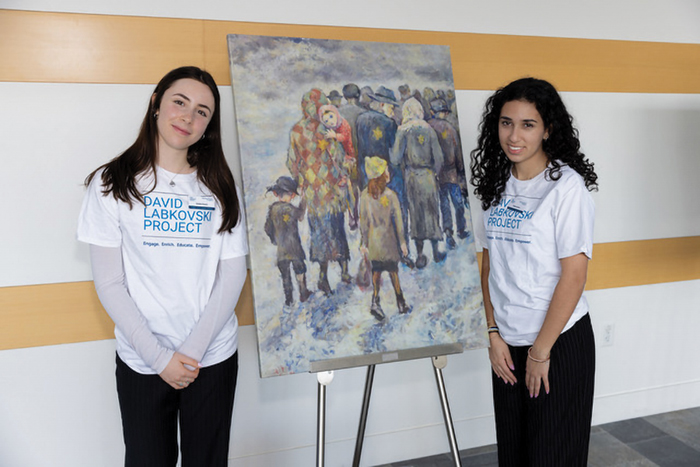 DLP Student Docents Photographer: Luis Luque Photography
DLP Student Docents Photographer: Luis Luque Photography In 2016 Leora Raikin embarked on a poignant journey introducing her late great-uncle’s artwork to the world. The first selection of David Labkovski’s paintings was displayed at a school in Canoga Park. Raikin presented the haunting images of children and adults during the Holocaust. Labkovski, a Holocaust survivor, channeled his experiences into over 400 paintings, each a testament to the horrors he witnessed.
The revelation that none of the eighth-grade students had heard of the Holocaust struck Raikin profoundly. “To the school’s credit, they changed this around,” she said. “When we informed community leaders about this reality on the ground, they couldn’t believe what’s been going on.”
Labkovski was born in 1906 in Vilna (current-day Vilnius, Lithuania). Once the war broke out, he was sent to prison in a Siberian gulag, and after the war he returned to Vilna, where he lived for 14 years. After many petitions, he and his wife Rivka were given permission to go and live in Israel. He spent the first year in Ramat Gan and then moved to the art colony in Tzfat.

Photographer: Luis Luque Photography
“We were his only surviving family on his wife’s side,” Raikin said. “They never had any children, and they were more like my grandparents than an aunt and uncle. We spent a lot of time with them growing up. They would come and stay with us in South Africa for weeks, and when we went to Israel, we would stay with them.”
The educational initiative, known as The David Labkovski Project (DLP), offers a unique approach to combating antisemitism and educating about the Holocaust. It integrates history and art, empowering students with the skills to educate their peers and community. Through the artist’s paintings and sketches, viewers not only learn about the Holocaust but also lessons of life, survival, tolerance, acceptance and the importance of bearing witness to history.
The program is available on Sundays throughout the year, providing students with a comprehensive educational experience at no cost. The curriculum is rigorous, requiring a seven-hour commitment, during which students undergo training to become docents. These docents play a crucial role during exhibitions, fostering connections with students from various schools. Half the students participating in this program are not Jewish.
“We actively engage with educators, from teachers to principals and superintendents of both public and private institutions, including Christian, charter and other schools,” Raikin said.
The project delves into the origins and repercussions of antisemitism, dividing Labkovski’s experiences into four distinct phases: pre-war Vilnius, his internment in Siberia, his poignant visual narratives of the Holocaust’s devastation in Vilna and his post-war rejuvenation in Israel.
The exhibit in La Jolla has 40 paintings and there are 20-50 real size lithographs in schools. The response to the program has been overwhelmingly positive; few have declined the offer to bring the exhibit to their schools.
“Our student jobs and training program in particular has garnered significant interest,” Raikin said. “Graduates of our program become ambassadors for the David Labkovski Project, often taking the initiative to reach out to school administrators to arrange visits. This grassroots approach has proven highly effective in expanding the reach of our program onto school campuses.”
Viewers of Labkovski’s art notice that he often used the brightest colors for the children he painted, representing the generation that would be robbed of their innocence and potential.
Viewers of Labkovski’s art notice that he often used the brightest colors for the children he painted, representing the generation that would be robbed of their innocence and potential. The clarity of colors in their clothing and facial expressions contrasts sharply with the dark reality they faced. He also employed a technique of almost disproportionate anatomy, particularly noticeable in the hands of those depicted in his Holocaust paintings. Their hands serve as a last resort — to hide, to cuddle, to embrace — a desperate attempt at protection.
In every stroke, every hue, Labkovski weaves a narrative with layers of meaning. His paintings are like stories waiting to be deciphered, with clues and information embedded in each brushstroke. From the play of light to the angle chosen, he meticulously crafts every detail. His background in anatomy, acquired at the Academy of Leningrad, allowed him to convey emotion with precision, particularly evident in the eyes and shoulders of the people he painted, revealing the internal turmoil of his subjects.
Raikin emphasized the dedication of today’s students, who, despite their busy schedules, willingly participate in the student docent and training program. She recounted a conversation with one student docent from Tijuana, who crosses the border every Sunday morning at 5 a.m. to attend school in San Diego. When she asked her why she devotes her Sundays to this program, her passionate response moved Raikin.
“She said, ‘This is so important to me,’ and you could just see it in her face. The passion that these students bring to educating their community and to educating people about the Holocaust, about antisemitism through this art, is incredibly hopeful.”
Raikin said that her great uncle would have been deeply moved and proud had he seen the project. She recalled that when he had his first exhibit in 1959, people didn’t want to see images of the Holocaust. “His art was critically acclaimed, but emotionally people did not want to see or talk about the Holocaust, it was too raw,” she said. “My uncle and aunt felt so devastated and betrayed by people’s reaction. So, for him to have students, generations after he died, not only look at his art but educate people through his art, this would have been beyond a dream come true.”
The exhibit will be on display until May 10.








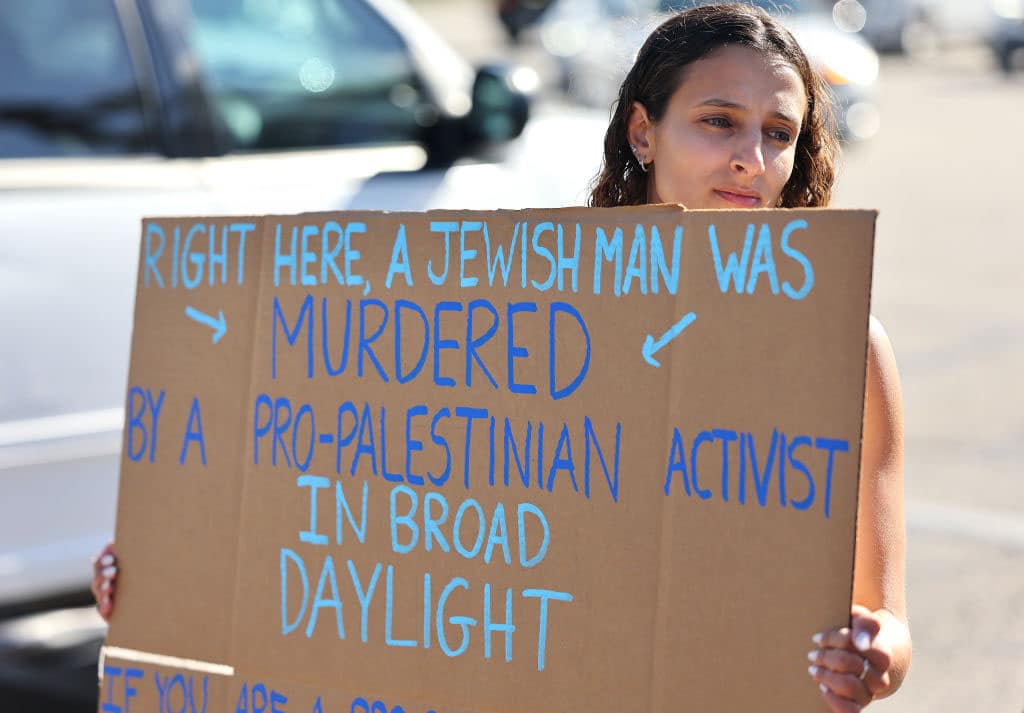



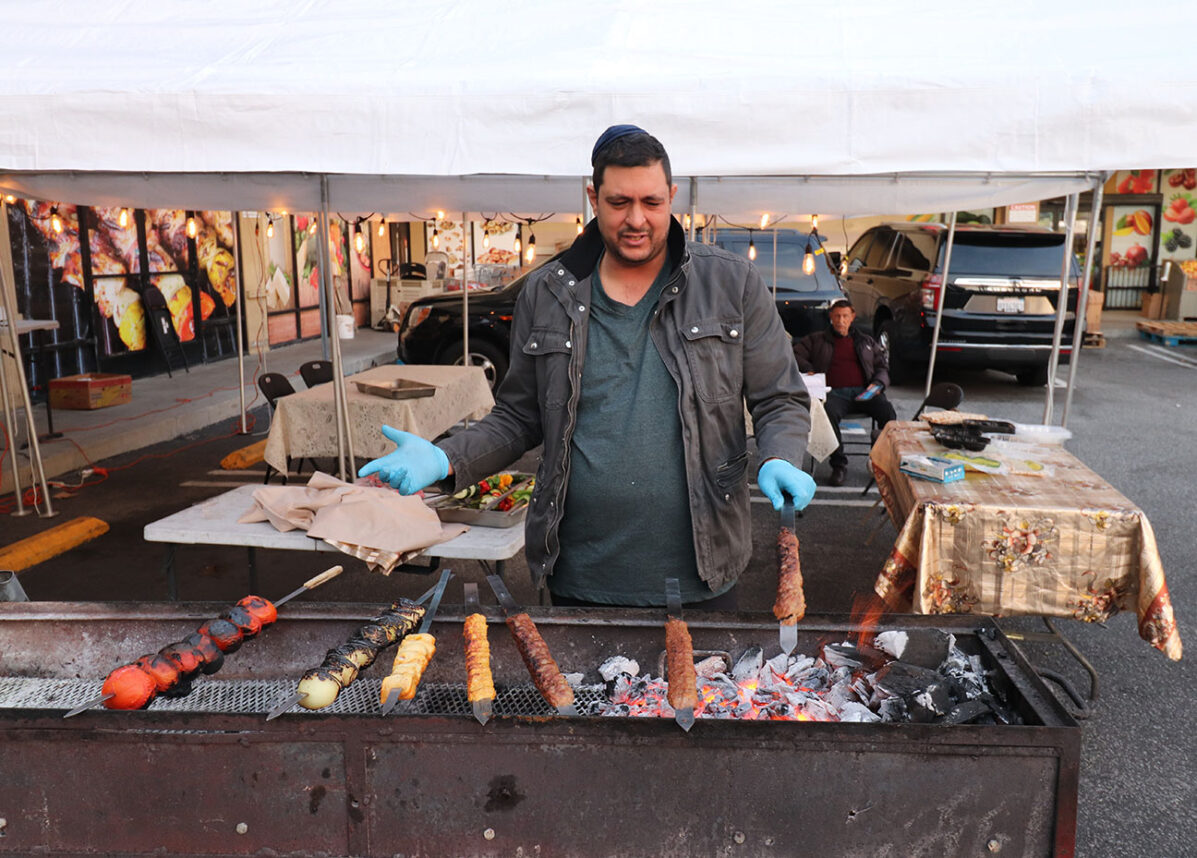

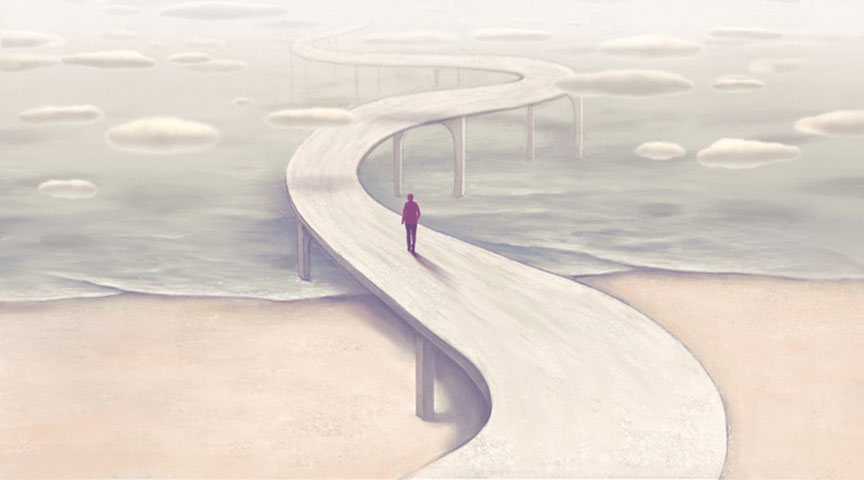





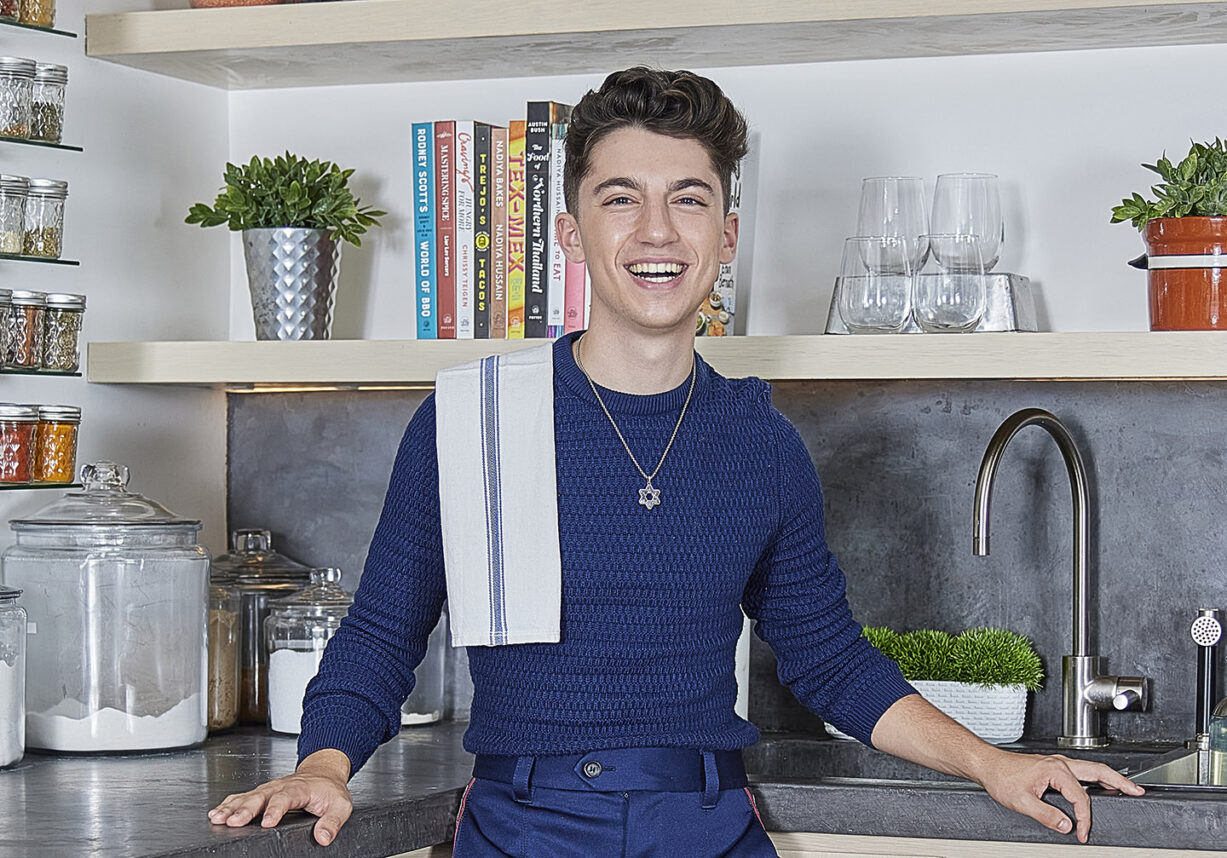

 More news and opinions than at a Shabbat dinner, right in your inbox.
More news and opinions than at a Shabbat dinner, right in your inbox.